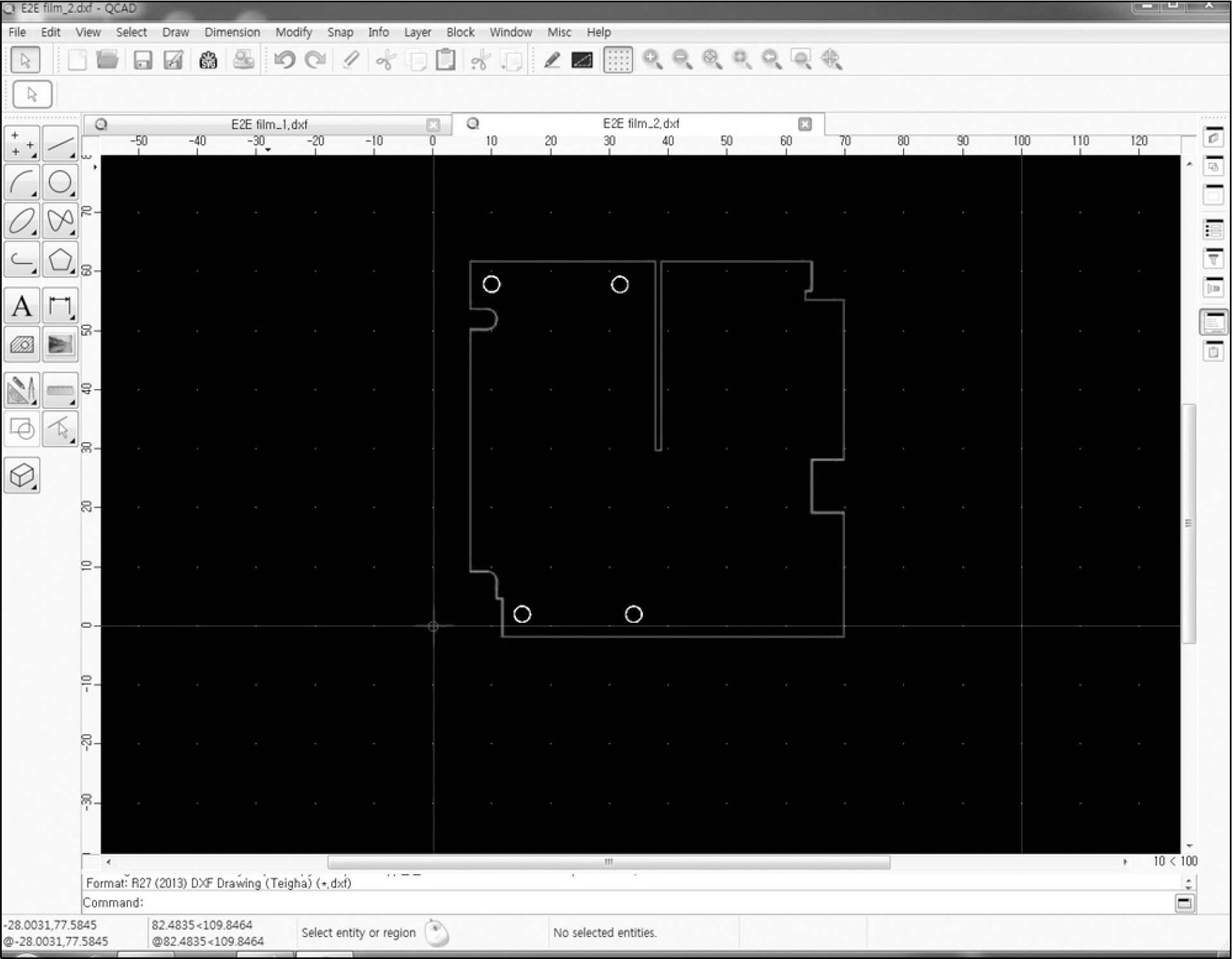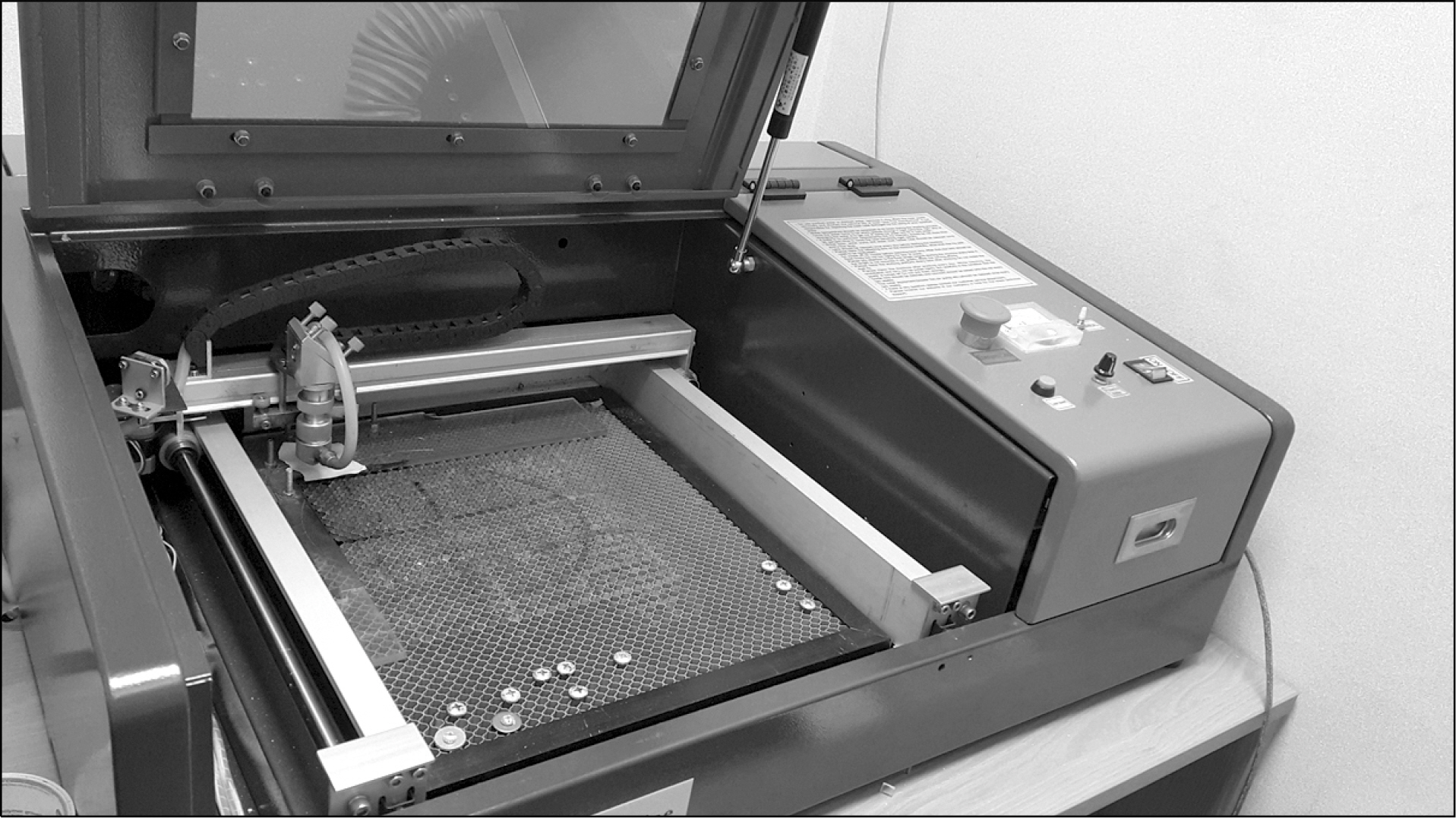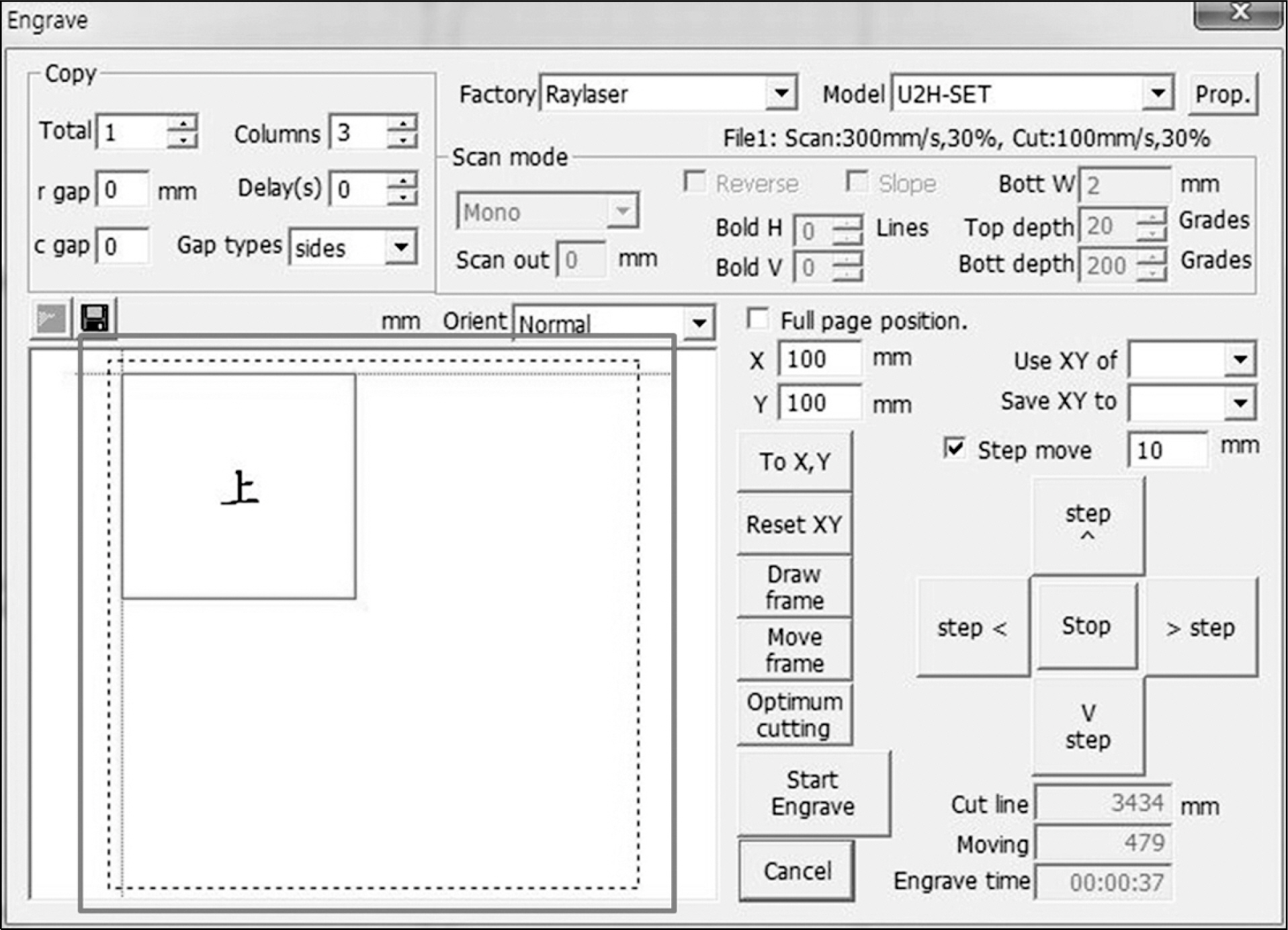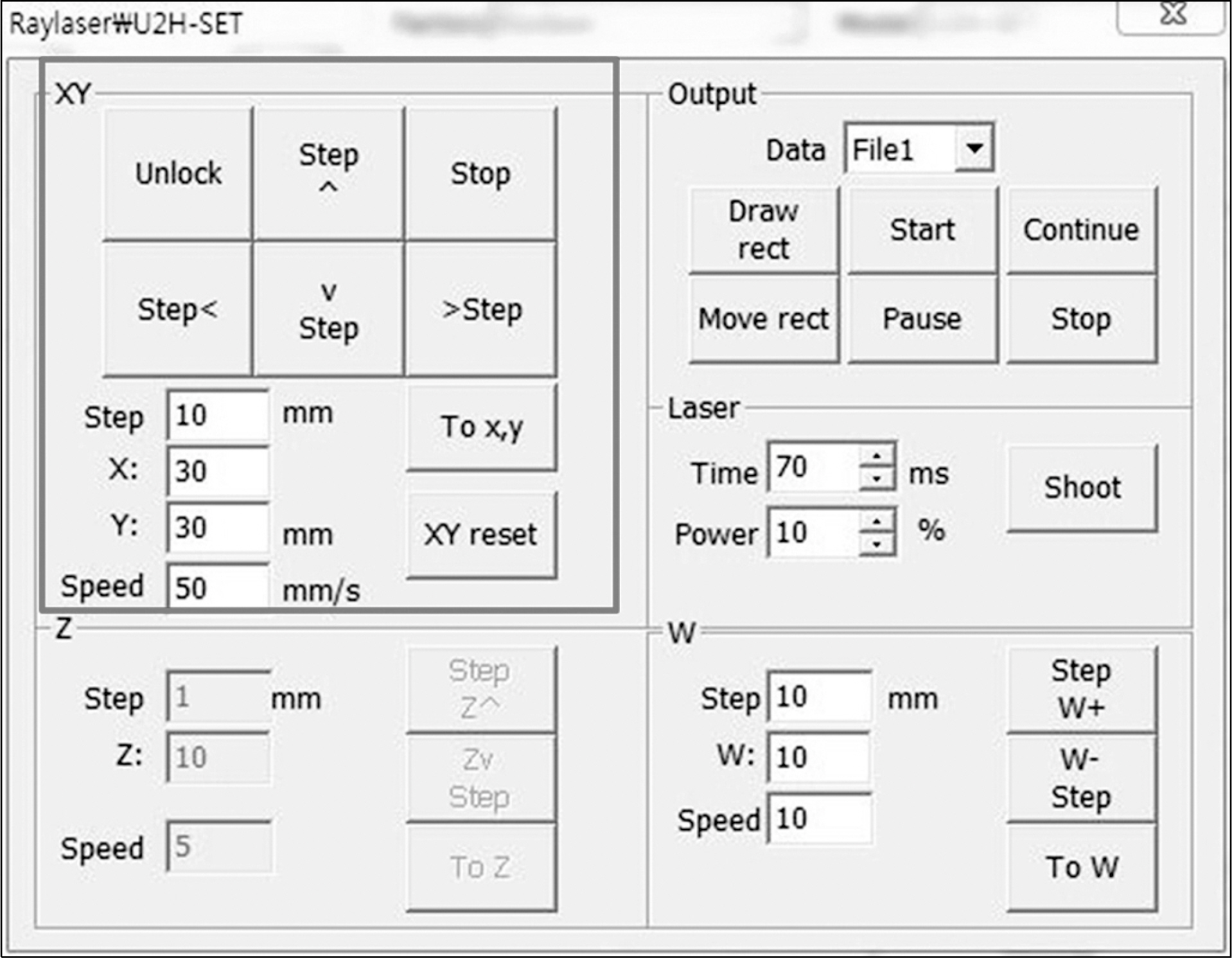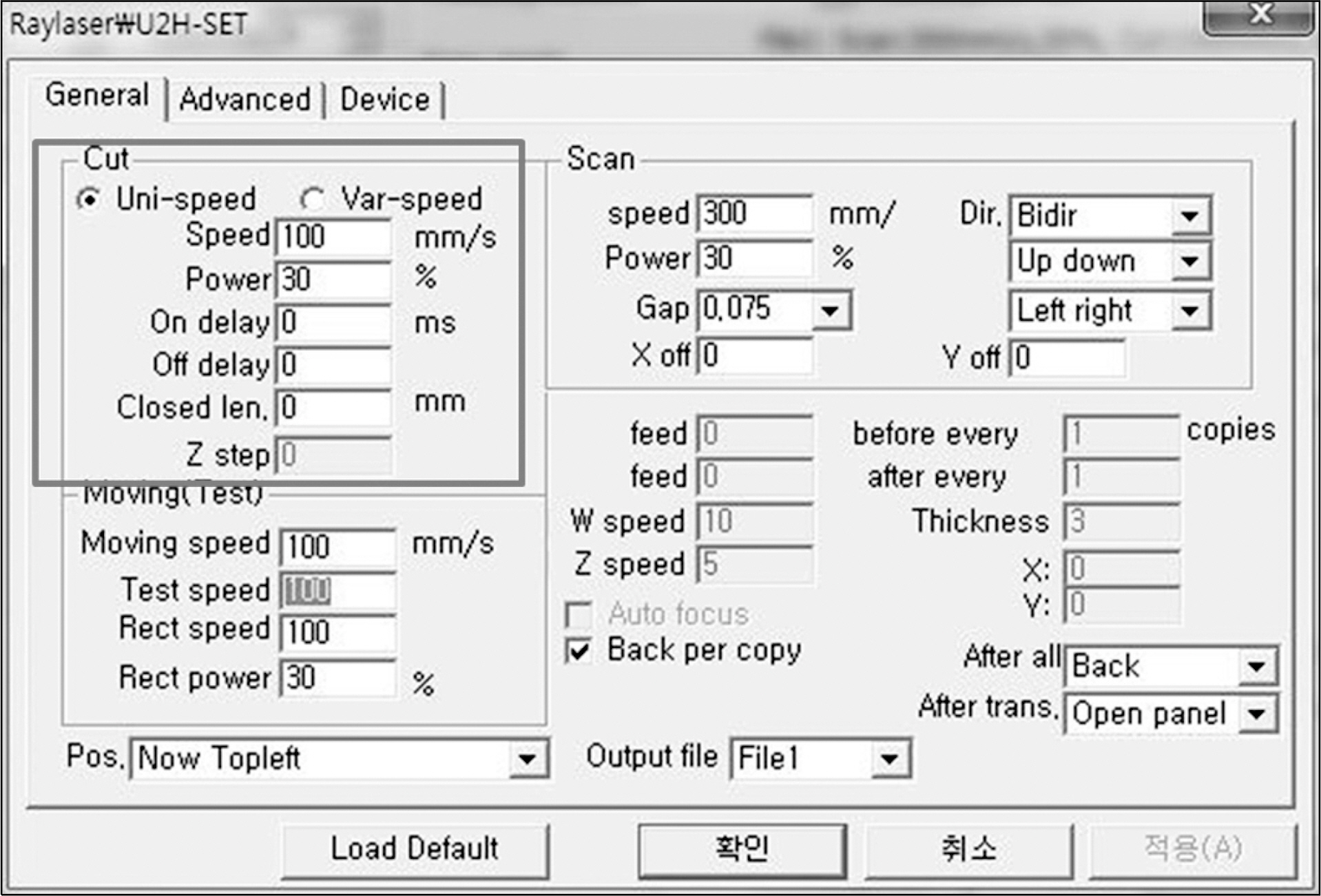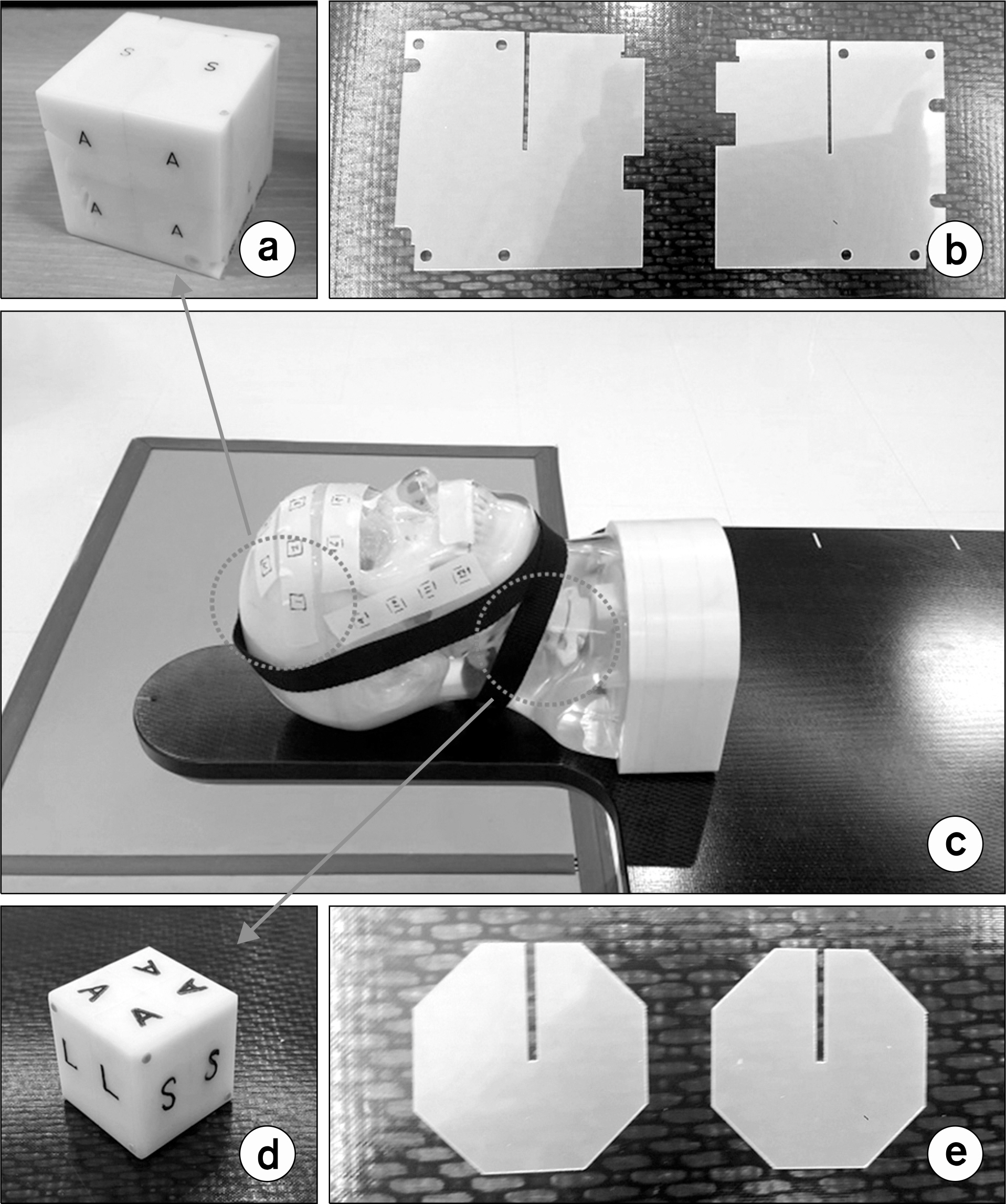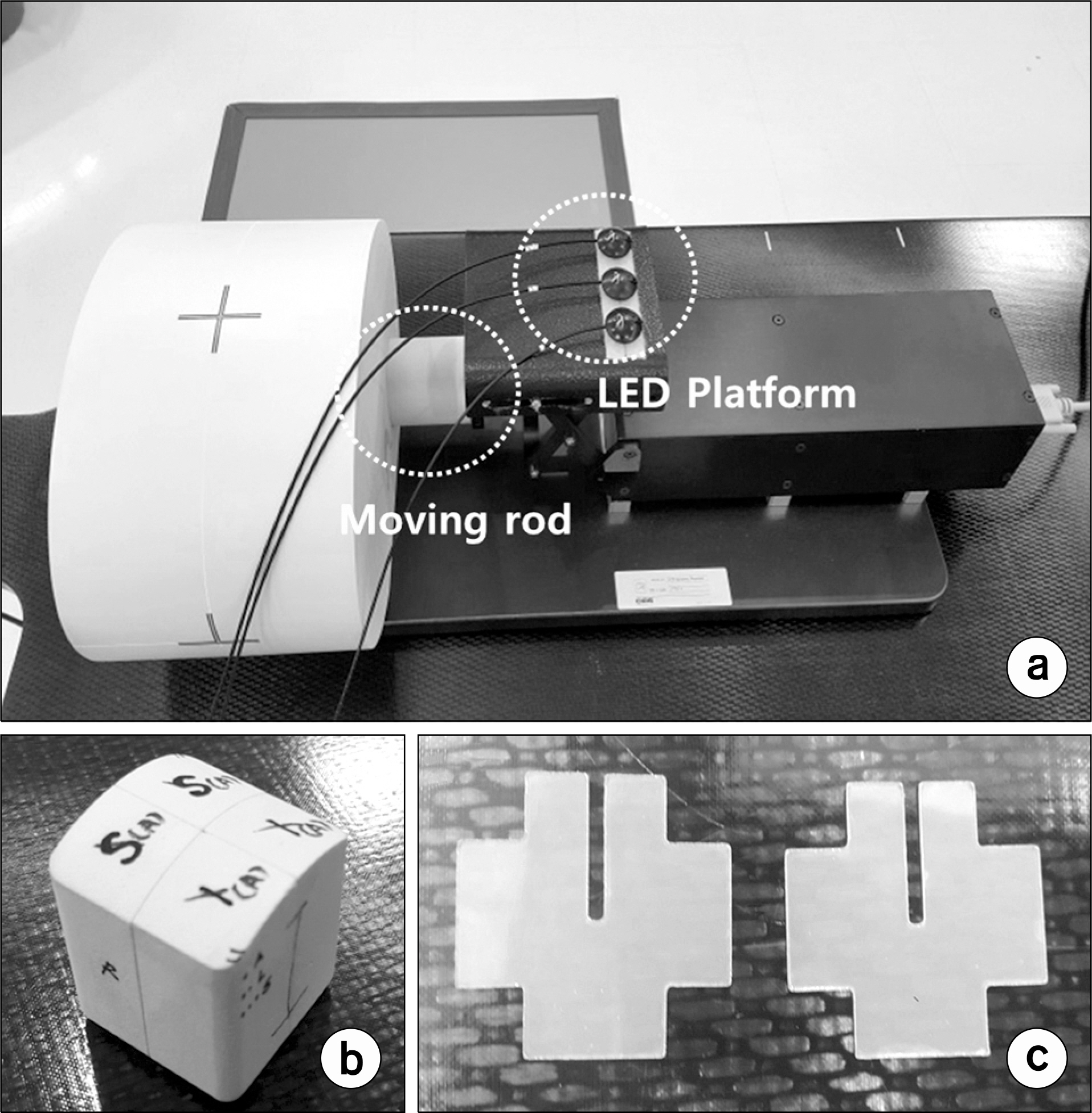Feasibility Study of a Custom-made Film for End-to-End Quality Assurance Test of Robotic Intensity Modulated Radiation Therapy System
- Affiliations
-
- 1Department of Radiation Oncology, Yonsei Cancer Center, Yonsei University Health System, Seoul, Korea.
- 2Department of Radiation Oncology, Yonsei University College of Medicine, Seoul, Korea. holee@yuhs.ac
- KMID: 2376551
- DOI: http://doi.org/10.14316/pmp.2016.27.4.189
Abstract
- This paper aims to verify the clinical feasibility of a custom-made film created by a laser cutting tool for End-to-End (E2E) quality assurance in robotic intensity modulated radiation therapy system. The custom-made film was fabricated from the Gafchromic EBT3 film with the size of 8"×10" using a drawing that is identical to the shape and scale of the original E2E film. The drawing was created by using a computer aided design program with the image file, which is obtained by scanning original E2E film. Beam delivery and evaluations were respectively performed with the original film and the custom-made film using fixed-cone collimator on three tracking modes: 6D skull (6DS), Xsight spine (XS), and Xsight lung (XL). The differences between total targeting errors of the original and custom-made films were recorded as 0.17 mm, 0.3 mm, and 0.17 mm at 6DS, XS, and XL tracking modes, respectively. This indicates that the custom-made film could yield nearly equivalent results to those of the original E2E film, given the uncertainties caused by distortions during film scanning and vibrations associated with film cutting. By confirming the clinical feasibility of a custom-made film for E2E testing, it can be expected that economic efficiency of the testing will increase accordingly.
Keyword
Figure
Cited by 4 articles
-
Practical Implementation of Patient-Specific Quality Assurance for Small and Multiple Brain Tumors in CyberKnife with Fixed Collimators
Eungman Lee, Kwangwoo Park, Jin Sung Kim, Yong Bae Kim, Ho Lee
Prog Med Phys. 2018;29(2):53-58. doi: 10.14316/pmp.2018.29.2.53.Patient-Specific Quality Assurance in a Multileaf Collimator-Based CyberKnife System Using the Planar Ion Chamber Array
Jeongmin Yoon, Eungman Lee, Kwangwoo Park, Jin Sung Kim, Yong Bae Kim, Ho Lee
Prog Med Phys. 2018;29(2):59-65. doi: 10.14316/pmp.2018.29.2.59.Acceptance Testing and Commissioning of Robotic Intensity-Modulated Radiation Therapy M6 System Equipped with InCiseTM2 Multileaf Collimator
Jeongmin Yoon, Kwangwoo Park, Jin Sung Kim, Yong Bae Kim, Ho Lee
Prog Med Phys. 2018;29(1):8-15. doi: 10.14316/pmp.2018.29.1.8.Skin Dose Comparison of CyberKnife and Helical Tomotherapy for Head-and-Neck Stereotactic Body Radiotherapy
Jeongmin Yoon, Kwangwoo Park, Jin Sung Kim, Yong Bae Kim, Ho Lee
Prog Med Phys. 2019;30(1):1-6. doi: 10.14316/pmp.2019.30.1.1.
Reference
-
1. Gallo J.J., Kaufman I., Powell R., et al. Single-fraction spine SBRT end-to-end testing on TomoTherapy, Vero, TrueBeam, and CyberKnife treatment platforms using a novel anthropomorphic phantom. Journal of Applied Clinical Medical Physics. 16(1):2015.
Article2. Dieterich S., Rodgers J., Chan R.Radiosurgery. in. Image-Guided Interventions. Springer;2008. p. 461–500.
Article3. Dieterich S., Ford E., Pavord D., Zeng J.SRS and SBRT. in. Practical Radiation Oncology Physics: A Companion to Gunderson & Tepper's Clinical Radiation Oncology. Elsevier Health Sciences;2015. p. 228–240.
Article4. Seung S.K., Larson D.A., Galvin J.M., et al. American College of Radiology (ACR) and American Society for Radiation Oncology (ASTRO) practice guideline for the performance of stereotactic radiosurgery (SRS). American Journal of Clinical Oncology. 36(3):310. 2013.
Article5. Sahgal A., Roberge D., Schellenberg D., et al. The Canadian Association of Radiation Oncology scope of practice guidelines for lung, liver and spine stereotactic body radiotherapy. Clinical Oncology. 24(9):629–639. 2012.6. Eshleman J.S., Berkenstock K.G., Singapuri K.P., Fuller C.The CyberKnife® M6™ radiosurgery system. J Lanc Gen Hosp. 8:44–9. 2013.7. McGuinness C.M., Gottschalk A.R., Lessard E., et al. Investigating the clinical advantages of a robotic linac equipped with a multileaf collimator in the treatment of brain and prostate cancer patients. Journal of Applied Clinical Medical Physics. 16(5):2015.
Article8. Dieterich S., Cavedon C., Chuang C.F., et al. Report of AAPM TG 135: quality assurance for robotic radiosurgery. Medical Physics. 38(6):2914–2936. 2011.
Article9. Ho A., Cotrutz C., Chang S.D., Adler J.R., Gibbs I.Quality assurance of the Cyberknife fiducial and skull tracking systems. in. Radiosurgery. Karger Publishers;2004. p. 255–259.
Article10. Solberg T.D., Medin P.M., Mullins J., Li S.Quality assurance of immobilization and target localization systems for frameless stereotactic cranial and extracranial hypofractionated radiotherapy. International Journal of Radiation Oncology∗ Biology∗ Physics. 71(1):S131–S135. 2008.
Article11. Nobah A., Aldelaijan S., Devic S., et al. Radiochromic film based dosimetry of image-guidance procedures on different radiotherapy modalities. Journal of Applied Clinical Medical Physics. 15(6):2014.
Article12. Radovanovic M., Madic M.Experimental investigations of CO2 laser cut quality: a review. Revista de Tehnologii Neconventionale. 15(4):35. 2011.13. Yilbas B., Davies R., Yilbas Z.Study into the measurement and prediction of penetration time during CO2 laser cutting process. Proceedings of the Institution of Mechanical Engineers, Part B: Journal of Engineering Manufacture. 204(2):105–113. 1990.
Article
- Full Text Links
- Actions
-
Cited
- CITED
-
- Close
- Share
- Similar articles
-
- Quality Assurance in Intensity Modulated Radiation Theray
- Review on the Pre-treatment Quality Assurance for Intensity Modulated Radiation Therapy
- Intensity Modulated Radiation Therapy Commissioning and Quality Assurance: Implementation of AAPM TG119
- Intensity-modulated radiation therapy: a review with a physics perspective
- Quality Assurance of Patients for Intensity Modulated Radiation Therapy


